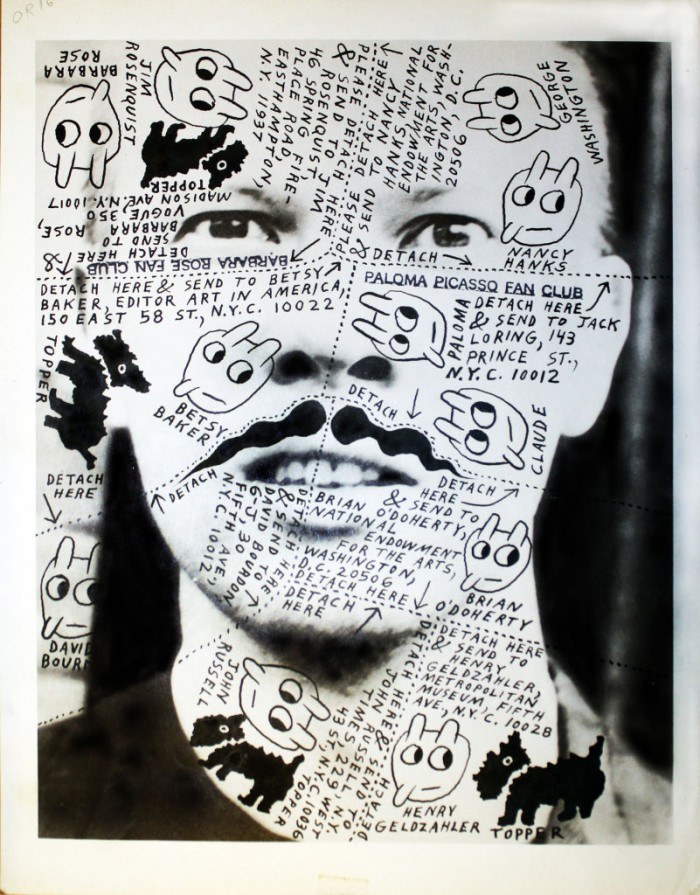“Ray Johnson are the funniest artist currently working in America.”
This sentence is not written in error, nor was it originally when first scrawled in black marker across a page of addresses and cryptic notes. Ray Johnson is the founder of the New York Correspondance School, which included over 100 artists involved in the ’50s-’60s New York culturescape in a self-conscious network of sending and receiving. The collective used the United States Postal Service to send out their art; they circulated collages, drawings, and witticisms that relied on cultural references for the receiver to interpret and understand. Thus they created an “intimate bureaucracy” alternative to the massive bureaucracy of institutions like the mail service.
Johnson, through his estate, has catalogued hundreds of “mail art and ephemera” works sent to and from the conceptual pop artist. A page from December 1976 reads, “Silhouette University; I have drawn silhouettes of the following people, who have kindly posed for me” and then lists 93 first and last names. Many pages are maps of collected text and images, ambiguous without their sources, with drawings and always some variation of “Please add to and send to….”
Johnson’s medium of display and distribution undermined the tradition of the museum as a necessary platform for artwork to be seen. In 1956, the artist wrote to the Japanese magazine Gutai, “I send out monthly newsletters about the work that I am doing which takes the place of formal exhibitions. The works cannot be exhibited in the usual way, because they continually change, like the news in the paper or the images on a movie screen.”
Not only did Johnson subvert the institution by replacing the gallery with the letterbox, he altered the role of the US mail. The inside jokes and Johnson’s signature doodles were transported from one artist to another by many unknown hands, who had no idea of their role. Sometimes Johnson addressed mail to a middleman who may or may not appreciate the page, with a request for him to forward it. In this way, the Correspondance School was an installation project, and although it was an elite and insular installation, it produced genuine art. The idea of famed abstract expressionist artists like Willem de Kooning adding devil horns to the faces drawn by Cy Twombly feels more real than any exhibition at the Museum of Modern Art could.
What is jarring is that this art could not exist today. As the use of the postage system plummeted, the view of mail as part of everyone’s everyday did too. That was the intrigue of the Correspondance School; Johnson and others were revolutionary because they changed the postage system’s function at a time when checking the mail was so normal and ingrained. Imagine a network of up-and-coming artists sending each other envelopes in 2016. Imagine going to the post office with some regularity. There is no way for it to be anything but depressingly nostalgic or kitschy. To create in the true spirit of Johnson, artists have to use the dominant modes of communication relevant to our age, to keep subverting the system but acknowledge that the system has changed.
Some are doing it. Australian photographer George Downing spent a year taking intimate portraits of Tinder matches in their bedrooms; Dutch art student Esmay Wagemans creates latex molds of her torso that she posts on Instagram as a jab at the app’s sexist nudity guidelines. And is it difficult to find something romantic about the sans serif text of a Gmail love letter, making inboxes at once a source of genuity and cheap flight deals? It is inevitable that the world’s operations will be in constant flux, but it’ll be fine if artistic responses are retained and create currents of personality that run through the faceless organizations that dominate societies.









